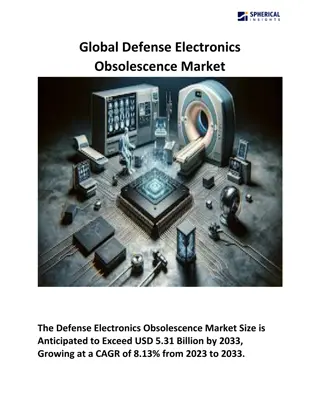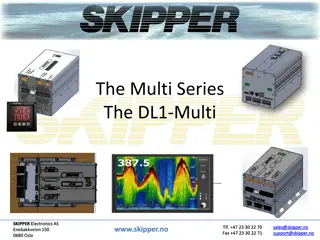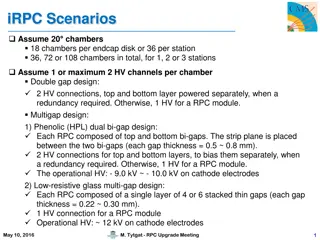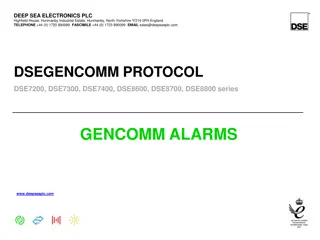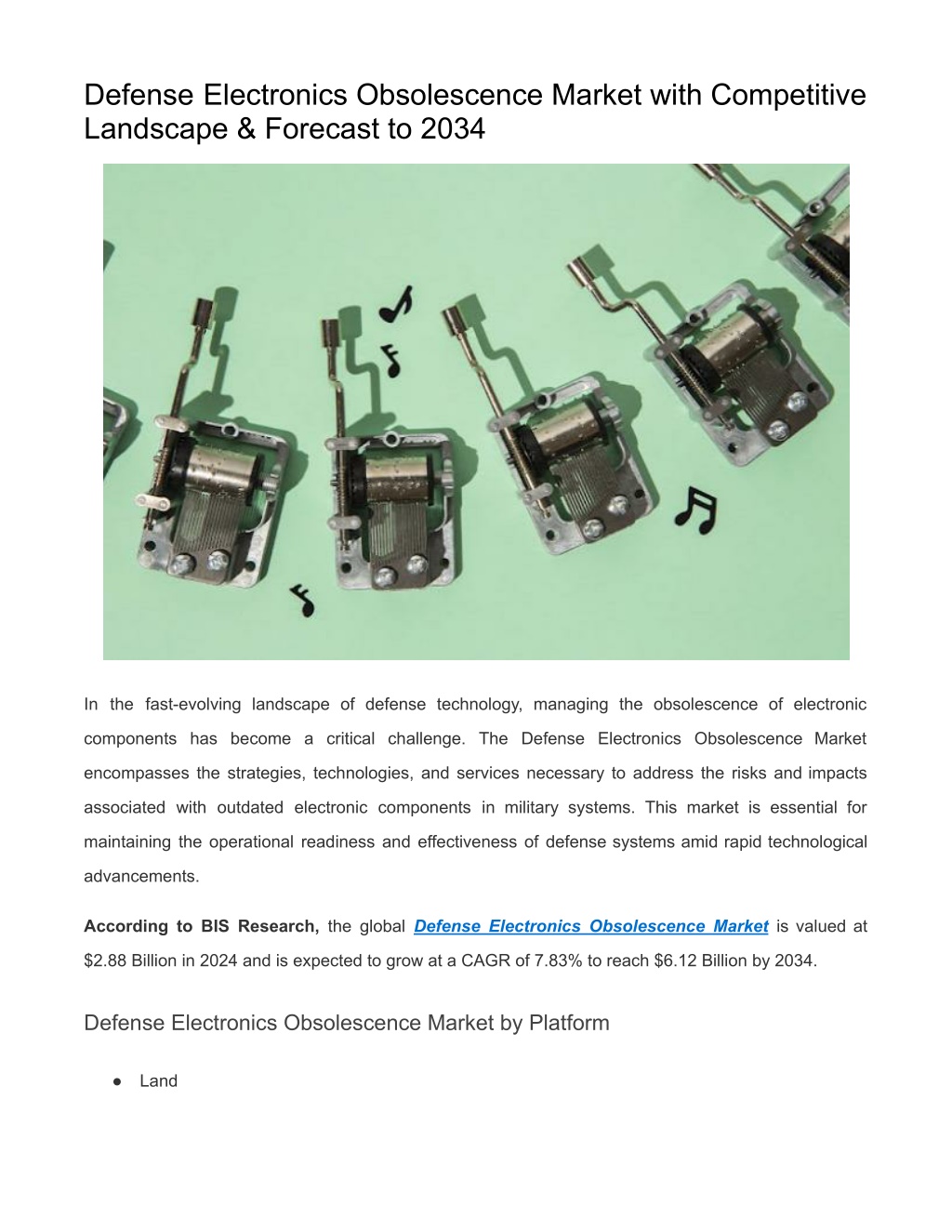
Defense Electronics Obsolescence Market
The defense electronics obsolescence market is valued at $2.88 Billion in 2024 and is expected to grow at a CAGR of 7.83% to reach $6.12 Billion by 2034.nnRead Report Overview: //bisresearch.com/industry-report/defense-electronics-obsolescence-
Download Presentation

Please find below an Image/Link to download the presentation.
The content on the website is provided AS IS for your information and personal use only. It may not be sold, licensed, or shared on other websites without obtaining consent from the author. Download presentation by click this link. If you encounter any issues during the download, it is possible that the publisher has removed the file from their server.
E N D
Presentation Transcript
Defense Electronics Obsolescence Market with Competitive Landscape & Forecast to 2034 In the fast-evolving landscape of defense technology, managing the obsolescence of electronic components has become a critical challenge. The Defense Electronics Obsolescence Market encompasses the strategies, technologies, and services necessary to address the risks and impacts associated with outdated electronic components in military systems. This market is essential for maintaining the operational readiness and effectiveness of defense systems amid rapid technological advancements. According to BIS Research, the global Defense Electronics Obsolescence Market is valued at $2.88 Billion in 2024 and is expected to grow at a CAGR of 7.83% to reach $6.12 Billion by 2034. Defense Electronics Obsolescence Market by Platform Land
Naval Airborne Defense Electronics Obsolescence Market Dynamics 1. Rapid Technological Advancements: The fast pace of technological innovation means that electronic components can become obsolete quickly. Defense systems, often designed for long-term use, struggle to keep up with the rapid turnover of commercial electronics. This discrepancy drives the demand for obsolescence management solutions. 2. Extended Life Cycles of Military Systems: Military platforms such as aircraft, ships, and ground vehicles are designed for extended service lives, often exceeding several decades. The longevity of these systems necessitates effective strategies to manage obsolescence, ensuring that they remain operational and effective throughout their lifecycle. 3. Regulatory and Compliance Requirements: Defense organizations must adhere to stringent regulatory standards and compliance requirements. Ensuring that systems meet these standards despite component obsolescence is a significant challenge, further driving the need for specialized obsolescence management solutions. 4. Supply Chain Vulnerabilities: The global supply chain for electronic components is complex and often susceptible to disruptions. The discontinuation of specific components can jeopardize the production and maintenance of defense systems, underscoring the importance of robust supply chain management and obsolescence mitigation strategies. Request A Free Detailed Sample on Defense Electronics Obsolescence Market! Defense Electronics Obsolescence Market (by System) Communication System Navigation System Human Machine Interface Flight Control System Targeting System
Electronic Warfare System Sensors North America's supremacy in the defense electronics obsolescence sector stems from its significant defense expenditures, sophisticated technological infrastructure, and resilient industrial prowess. This dominance is fortified by strategic commitments to research and development, safeguarding operational efficacy and technological superiority. Such leadership plays a pivotal role in upholding global stability and safeguarding national security interests amidst escalating geopolitical dynamics. Emphasis on pioneering obsolescence management tactics further solidifies North America's market standing. Future Outlook The Defense Electronics Obsolescence Market is poised for sustained growth as military organizations worldwide prioritize maintaining the readiness and effectiveness of their systems amidst rapid technological changes. Key trends shaping the future of this market include: Increased Adoption of Predictive Analytics: Leveraging big data and machine learning to predict obsolescence and proactively manage risks. Enhanced Collaboration with Suppliers: Strengthening partnerships with component suppliers to ensure a steady supply of critical parts. Focus on Modular Design: Developing modular systems that can be easily upgraded or modified to address obsolescence. Investment in R&D: Continuing investments in research and development to create innovative solutions for obsolescence management. Download Our ToC: Click Here! Conclusion The Defense Electronics Obsolescence Market plays a vital role in ensuring the operational readiness and longevity of military systems. As technology continues to evolve rapidly, effective obsolescence management will be crucial for defense organizations worldwide. With ongoing investments, strategic
partnerships, and innovative solutions, the market is well-positioned to address the challenges of obsolescence and support the defense sector's mission-critical needs.








